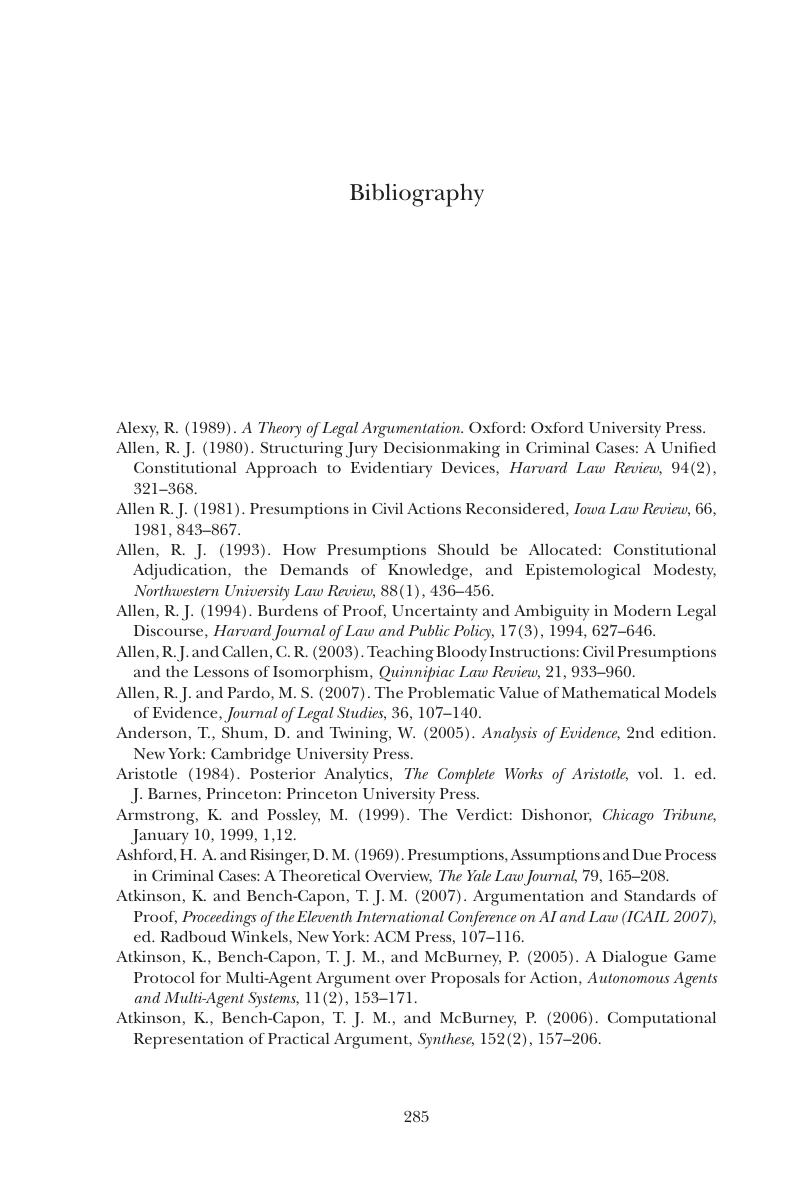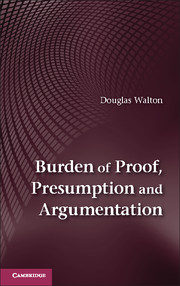Book contents
- Frontmatter
- Dedication
- Contents
- Acknowledgments
- 1 Introduction to Basic Concepts and Methods
- 2 Burdens of Proof in Legal Reasoning
- 3 Presumption in Legal Reasoning
- 4 Shifting the Burden of Proof in Witness Testimony
- 5 Burden of Proof in Dialogue Systems
- 6 Solving the Problems of Burden of Proof
- 7 Burdens of Proof in Different Types of Dialogue
- 8 Conclusions
- Bibliography
- Index
- References
Bibliography
Published online by Cambridge University Press: 05 July 2014
- Frontmatter
- Dedication
- Contents
- Acknowledgments
- 1 Introduction to Basic Concepts and Methods
- 2 Burdens of Proof in Legal Reasoning
- 3 Presumption in Legal Reasoning
- 4 Shifting the Burden of Proof in Witness Testimony
- 5 Burden of Proof in Dialogue Systems
- 6 Solving the Problems of Burden of Proof
- 7 Burdens of Proof in Different Types of Dialogue
- 8 Conclusions
- Bibliography
- Index
- References
Summary

- Type
- Chapter
- Information
- Burden of Proof, Presumption and Argumentation , pp. 285 - 296Publisher: Cambridge University PressPrint publication year: 2014



